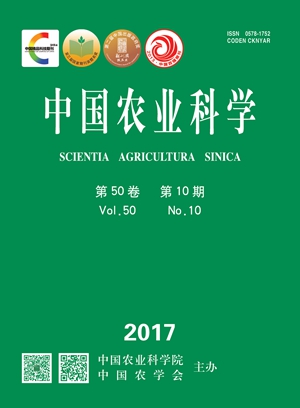【Objective】 The progenies of Sesamum indicum and wild species were obtained by interspecific hybridization in order to improve charcoal rot disease (Macrophomina phaseolina) resistance of sesame cultivars. 【Method】 No.3 wild sesame (S. indicatum) (P3), Zhongzhi 14 (P1) and autotetraploid of Zhongzhi 14 (P2) were used as reciprocal cross parents, the F1 plants of interspecific hybrids were obtained using the immature embryo culture technique. First, the authenticity of F1 progenies were confirmed by using phenotypic, cytological and SSR marker methods in order to screen out the true hybrids . Then the three parents of the interspecific hybrids (No.3 wild sesame, Zhongzhi 14 and autotetraploid of Zhongzhi 14 )and hybrids of F1 lines resistance to Macrophomina phaseolina was identified by artificial inoculations. 【Result】The seedling ratios of immature embryos between reciprocal combinations existed significant difference. The 773 immature embryos were inoculated of which 155 embryos developed into seedlings and the average seedling rate was 20.05%. The seedling ratios of combinations (P3×P1 32.75%, P3×P2 21.11%) were higher than those of reciprocal combinations (P1×P3 8.84%, P2×P3 13.41%). This indicates that the genotype of the parent affects the seedling rate of distant hybridization to a large extent. The number of chromosomes in the F1 plants of (P3 × P1, P1 × P3) was 42 and in the F1 plants of (P3 × P2, P2 × P3) was 55. The majority of the pollen grains of the F1 hybrids were regular but no inclusions, all of which were highly sterile. HS142 primer with a better polymorphism could be clearly amplified two specific types in Zhongzhi14 (about 460 bp and 500 bp) and the one in No.3 wild sesame(about 380 bp) .Then, it could be used to identify twelve hybrid progenies and their parents. There are ten of F1 progenies with three male and female-specific markers of the parents, the other two plants only appeared in the female parent or male parent type which was the fake hybrids. The infected lesion length of progenies from interspecific hybridization P3×P1, P3×P2, using No.3 wild sesame with high charcoal rot resistance as female parent, was 9.35 cm and 6.65 cm, respectively, while 9.90 cm and 8.90 cm from reciprocal combinations. The resistance to Macrophomina phaseolina of progenies from all combinations was higher than their cultivated parents (P1 14.30 cm and P2 11.46 cm), but weaker than wild relative (P3 4.80 cm). 【Conclusion】 New germplasms with high charcoal rot resistance can be created through interspecific hybridization combined with immature embryo culture, which provides important materials for genetic improvement of sesame with charcoal rot resistance.









